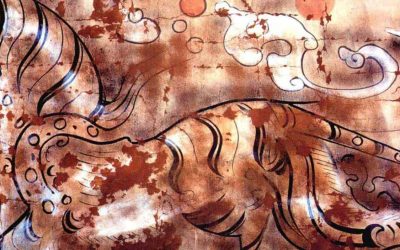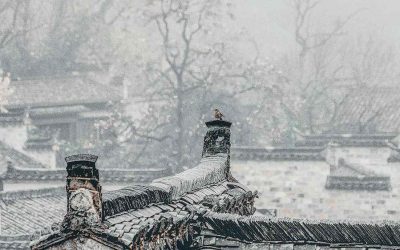A Giant Mandala in the Heart of Tibet
The Palkor of Gyantze is one of Tibet’s great marvels and a unique jewel of universal architecture and art. Its shape, scale, and iconography defy comparison with any other construction.
Amidst some of the highest mountains of central Tibet, on the ancient trade route linking Lhasa with India, lies the small town of Gyantze. There stands one of the most singular and dazzling monuments of the Buddhist world: the Palkor Chöde. With a silhouette that astonishes from the very first glance, the Palkor is neither palace nor fortress, neither monastery nor temple, but rather a kind of three-dimensional architectural mandala: a kumbum.
- An Architectural Form Without Parallel
While most Tibetan temples follow horizontal layouts inspired by Indian or Chinese models, the Palkor rises like a stepped pyramid of multiple levels, each containing rows of chapels. This structure follows a symbolic design, representing a universe through which the pilgrim ascends toward enlightenment. The term kumbum literally means “one hundred thousand images,” and in the case of the Palkor, the name is no exaggeration.
- An Artistic Treasure Without Equal
The interior of the kumbum contains 108 chapels distributed across six concentric levels. Each one is adorned with frescoes, statues, and mandalas that, on their own, could justify the existence of an entire religious center. In fact, anywhere else in the world, a single one of these chapels would be enough to attract pilgrims, scholars, and art lovers alike. The mural paintings that cover its walls—rendered in the Nepali-Tibetan style of the 15th century—still preserve a vividness of color and detail that has withstood centuries of weather, war, and neglect. Many of these images offer a compendium of cosmology, medicine, tantric ritual, and visions of the afterlife.
- History of Its Construction
The Palkor was built between the late 14th and mid-15th centuries under the patronage of the prince of Gyantze, Rabten Kunzang Phak, during a period of relative political stability and cultural openness in Tibet. It was a time when multiple Buddhist schools coexisted, and the monastery annexed to the kumbum was home to at least three traditions: Gelug, Sakya, and Kagyu. This coexistence explains the rich iconographic and doctrinal diversity found within, making the Palkor a living testament to a plural and dynamic Tibet.
- Symbolism in the Tibetan World
The Palkor is not merely a temple: it is an architectural mandala to be walked through, a physical visualization of the path to enlightenment. Ascending its levels is like progressing through the stages of tantra—from the outer circles of protection to the central deities who embody emptiness and compassion. Each chapel serves as a gateway to a specific teaching, and the whole structure forms a miniature cosmos. Its design, layout, and ritual function make it a monument of profound symbolic depth.
Visiting the Palkor Today
Despite the ravages of time and the iconoclastic campaigns of the 20th century, the Palkor still stands—lofty and magnificent, a reliquary of wisdom and beauty. Climbing its levels, pausing in its chapels, and attempting to uncover its mandalic meaning is a transformative experience. For those who observe it with care, the Palkor is not merely a monument—it is a silent teaching, a vertical pilgrimage to the heart of Tibetan Buddhism.
The mandalic structure of the Palkor recalls, in both function and symbolism, the great monument of Borobudur in Indonesia. Both can be read as three-dimensional mandalas, designed for the pilgrim to physically experience the transformations that masters achieve on the psychological plane.
About me: I have spent 30 years in China, much of the time traveling and studying this country’s culture. My most popular research focuses on Chinese characters (Chinese Characters: An Easy Learning Method Based on Their Etymology and Evolution), Matriarchy in China (there is a book with this title), and minority cultures (The Naxi of Southwest China). In my travels, I have specialized in Yunnan, Tibet, the Silk Road, and other lesser-known places. Feel free to write to me if you’re planning a trip to China. The agency I collaborate with offers excellent service at an unbeatable price. You’ll find my email below.
Last posts
2,000-year-old paintings in a Chinese tomb
2,000-year-old paintings in a Chinese tomb It has been more than 10 years since the publication of The complete collection of murals unearthed in China, a dozen or so books describing with abundant full-color photographs the frescoes discovered in Chinese tombs....
Buddhist Monks in Medieval China
Buddhist Monks in Medieval China That is the subject of John Kieschnick's book. The book analyzes the contents of the three collections of biographies of monks that became famous in medieval China, through them he tries to give us first a characterization of the...
Manual of Taoist Architecture
Manual of Taoist Architecture There are some illustrated books that produce in the reader a contradictory feeling, because the images that explain what the text is about are sometimes accompanied by an exposition of ideas that is too superficial. Therefore the reader...
How the presence of goddesses paves the way for female power
How the presence of goddesses paved the way for female power One of the theses of my book Matriarchy in China: mothers, goddesses, queens and shamans (Madrid, 2011) was to assert that the presence of goddesses with prominent roles in a culture could signal the past or...
Spirits possession in ancient China
Spirits possession in ancient China. I have just finished reading The Ancestors Are Drunk, a book by Jordan Paper. Perhaps one of the best books on the religion of China that can be found, because with every chapter, almost with every page, he opens new windows,...
Yan Lianke. The Four Books
Yan Lianke. The Four Books The Four Books refers to the famous Four Books of Confucius, the basis of Chinese thought for two millennia. And like those of Confucius, these by Yan Lianke could become a new model for understanding the glories and miseries of human...










